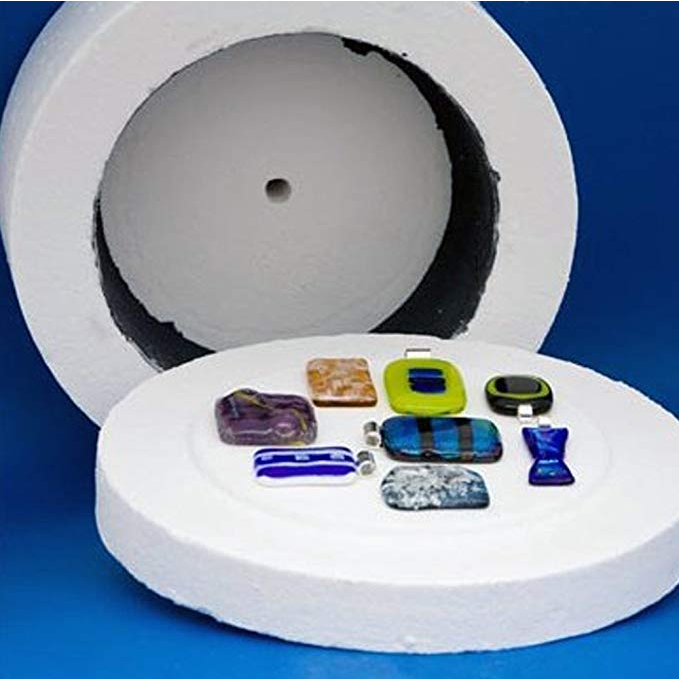Revision based on comments on the question.
This answer originally suggested a microwave kiln. Then I saw the discussion in the comments. To start with the bottom line, you can't melt wine bottles in a household oven. If those are the only kind of bottles you are interested in, that's the end of the discussion. However, you could probably do it with "normal size" bottles, and it would be inexpensive to try it.
You are apparently aware of the typical microwave kilns you can buy to melt small hunks of glass. You can make a microwave kiln yourself, and I think a kiln designed for this purpose, with the proper procedure, would probably enable you to flatten bottles up to about beer bottle size, and in a reasonable amount of time. They aren't wine bottles, but are a pretty similar variation on the theme.
For readers unfamiliar with microwave kilns, here's an example of a typical kiln sold for melting glass chunks, or even metals, in your household microwave oven:
You can make your own, and you can shape and size it to your requirements. Here's an Instructable that covers one design very well: DIY Microwave Kiln | Fuse Glass in Your Microwave. The materials are available on Amazon if you can't find them locally.
The video in the linked Instructable shows some very tall microwave kilns made by the author. He accommodated them by turning the microwave on its side and standing them in the long direction.
If your only objective is to flatten bottles on their side, like the examples in your link, that would be simpler. Rather than making a tall kiln and standing the microwave on its side, you could make a rectangular kiln that was squat, so it would cover much of the bottom of the microwave in its normal orientation, and be tall enough to accommodate the diameter of the bottle laying down. To fit the tallest (longest) possible bottle, you could even make the kiln a little bit bottle-shaped (narrower at one end), and fit it diagonally inside the microwave. With a large microwave, you could accommodate a bottle up to about beer bottle size.
There was some discussion in the comments about whether a microwave kiln generates enough heat to melt something the size of a bottle. Given enough time, it would, but there's a way to speed up the process. Preheat the bottle in a regular oven up to the maximum temperature of the oven. Then put it in the microwave kiln.
Hot glass absorbs microwave energy; the hotter the glass, the more energy it absorbs. The video in the Instructables link shows the glass turntable of a microwave getting hot enough to glow because the microwave was operated with the glass hot. Preheating the bottle helps in several ways -- the bottle is starting at a higher temperature, and then getting a temperature boost from the microwaves in addition to the heat generated by the kiln.
